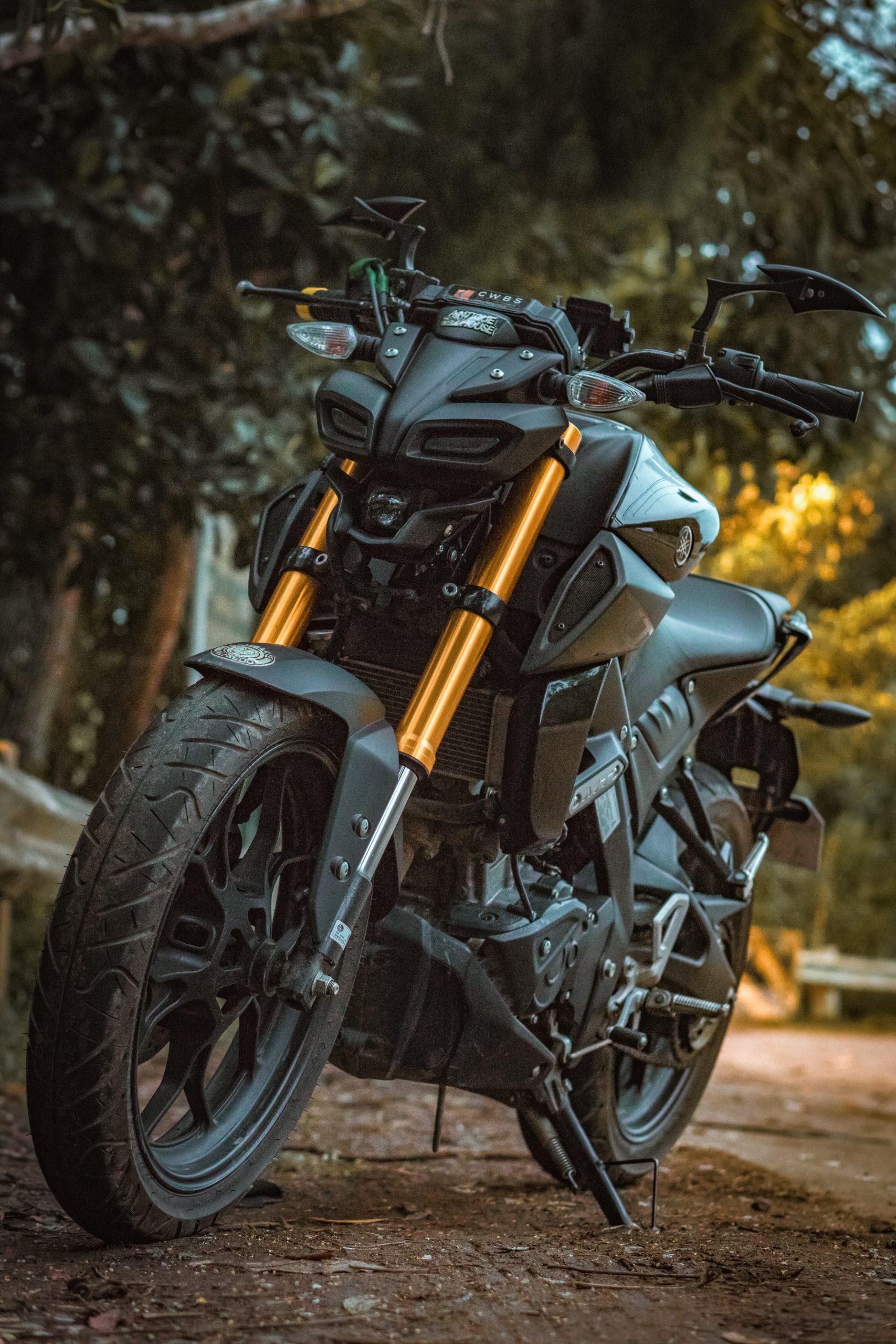- This topic has 19 replies, 10 voices, and was last updated 8 years, 11 months ago by
nani stephen.
Quick Stop Technique
-
AuthorPosts
-
September 6, 2008 at 1:58 am #2046
Andrew
ParticipantSo I have tried the quick stop practice in a parking lot on the Ninja and discovered it has much better brakes than the Nighthawk I rode in class. Who would have guessed?
I can quick stop smoothly and in the right distance at 15 mph. 20 mph was causing me a few minor problems though. I started out making really quick stops but skidding the rear tire a bit. I was only able to fix it by consciously doing the downshift before braking and by trying to grab the brakes less fast. That had me not skidding but going 2 feet past my marker. I will do more practice which should help but if anyone has any tips then fire away.
I do think my brain wants to grab for the brakes faster than I would ever apply the brakes in a car in the same situation. Maybe thats just confidence in driving over riding as a noob?
September 6, 2008 at 2:25 pm #11744ilnam
ParticipantDo you happen to pull the clutch in while/before you brake hard? Wait to pull the clutch in until right before you stop, then you’ll have the engine working for you too, and I’ve seen where this avoids the rear tire locking up as easily.
September 6, 2008 at 3:48 pm #11747Budd
ParticipantMy bike has a back brake? Yeah, I use the front brake quite a bit. The front will give you the most feedback on the Ninja.
“I am the best there is at what I do, and what I do ain’t nice.”-Wolverine
September 6, 2008 at 6:02 pm #11756Rab
ParticipantYou should, of course, use BOTH brakes together, applied progressively, with the front providing 75% of your stopping power. This is due to the weight transfer which makes the back wheel light (and more prone to losing traction).
As you slow more and more, use more front brake and less rear to avoid the back end sliding out.
September 6, 2008 at 7:51 pm #11764smokeizfire
Participant..maybe it’s just my bike but I haven’t had that problem. I’ve only been riding for 3 days on a permit(111 miles all city), but the foot brake seem more synonymous with the foot brake in a car. The front brake seem similar to the front brake on a pedal bike. I guess since I use to do a lot of both(still drive a lot, but not in the past 3 days.), braking isn’t my Achilles heel. Try pumping the foot brake. That may work until you learn how to gauge pressure steadily to both brakes.
HE WHO DIES WITH THE MOST TOYS WINS
September 8, 2008 at 2:05 am #11792CBennett
ParticipantJust dont lock the FRONT brake like I did in class today
. I only did it once but that was enough to scare the ***** out of me lol. And that was just on a little 125 Kawasaki..I bet the Ninja has better brakes also
.
September 8, 2008 at 2:52 am #11799Andrew
ParticipantYou might want to be careful easing up on the back brake during a stop. They warned us in class to not release the rear brake once it was engaged. Your probably fine with the clutch engaged but it’s probably a bad habit to get into. I didn’t get to practice this weekend so I’ll have to do some this week sometime.
September 8, 2008 at 3:11 am #11801Anonymous
Guestthis is wrong. pull the clutch immediately.
Before discussion starts on this – there’s whole battery of tests done on this issue and they confirm it. Engine can not unwound as fast as the speed decreases on modern bikes with good brakes. BTW, front brake provides up to 100%, regardless of the bike type. The secret is to squeeze clutch, rear brake and a front brake at the same time, but for the first split second be heavy on the rear and light on the front. That allows the weight to shift to the front, so that front tire doesn’t slip. Then squeeze the front more and get lighter on the rear. Just for reference, a good driver in ideal conditions can stop from 100 km/h to 0 in somewhat more than 3 seconds. And that’s both on stock sport bike and cruiser.
K
September 8, 2008 at 4:54 am #11803Munch
Participant“BTW, front brake provides up to 100%, regardless of the bike type.” from that to this == “squeeze clutch, rear brake and a front brake at the same time, but for the first split second be heavy on the rear and light on the front” ….. what?! This is the type of talk I got from my peers in RL that would confuse the crap outta a beginner.
I know what you meant but a total beginner is trying to absorb everything word for word….. pleases be careful in how you put things especially when every trainer, DMV and beginners sites stress the 70-75% rule of thumb for front brake effectiveness.Yesterday is a memory, tomorrow is a prediction, but today…… is a Bi**h
September 8, 2008 at 6:46 am #11806megaspaz
Participanteh? it should be you shouldn’t release the rear brake if you lock it. That’s the MSF stance. You can release the rear brake til kingdom come as long as you don’t lock it.
An advanced technique for getting out of a rear wheel lock is to open the throttle and then slowly, gently release the rear brake.
—
If there’s anything more important than my ego
around, I want it caught and shot now…September 8, 2008 at 1:47 pm #11809Anonymous
Guest“… pleases be careful in how you put things especially when every trainer, DMV and beginners sites stress the 70-75% rule of thumb for front brake effectiveness…”
Sorry buddy, Plato amico, magis amice veritas. If they do that, then, they should revise their information. 75% number dates from the days when front brake was drum and tire material provided less traction. Now in the times of double discs at front, numbers changed. Everybody here who ever saw a stopie, can confirm that the front brake can provide up to 100%. Pure physics, nothing to do with the experience.
Check this out:
regards,
K
September 8, 2008 at 2:05 pm #11810Andrew
ParticipantYour right that the MSF just preaches you to leave the brake on if you lock it. If your clutch is in then it shouldn’t really matter since the rear wheel has no power just momentum. I think as a noob it best just to get the basics down and get used to relying on the front brake. In a real life emergency I would just react and anything that takes thinking would probably not happen.
September 8, 2008 at 2:07 pm #11811Andrew
ParticipantSeeing guys do stoppies is what leads to noobs like me being wary of being hard on that front brake.
September 8, 2008 at 2:11 pm #11812Munch
ParticipantI Applaud you for at least giving a link to the MSF site, though I saw no real conclusion in that other then a “stoppie” (which a new rider should not be doing) the front brakes are doing 100% of the stopping force. Even in that documentation they let you know that rear brakes are integral in the procedure thus eliminating the 100% part. It does give excellent explanation of weight transfers and process of the weight movement in the braking process.
Though my case was not really so much on the actual braking percentages as it is the contradictory terms . A straight new rider which I was not so long ago and still am will listen to everything he/she can grab and learn from , especially in anticipation of getting on the bike for the first time…. saying that the front brakes do 100% of the stopping ( thus wondering why a rear brake would be needed, trust me thought patterns run in that directions for some), then in the same paragraph saying that the initial stop should be initiated using the rear brakes…. kinda leaves one scratching their head if they have never been on a bike.
All “scientific” models can be proven or dis proven as there is a particular “chaos” theory that gets involved ..even in “controlled” situations… its called the human factor. That very study you linked even lets the reader know that in the tests, the riders (more then one, already inconsistent return for data) were allowed to use their own styles of stopping. Again…not so much on the technical as I am on giving CLEAR information. One reason why counter steering is such a confusing topic to learn about.Yesterday is a memory, tomorrow is a prediction, but today…… is a Bi**h
September 8, 2008 at 3:38 pm #11814Anonymous
GuestOk, let’s clarify this. I’m not saying that anybody should be doing the stopie, or that doing the stopie is the best way to brake, or that rear brake should not be used. Not at all. Actually, in my first post I just argued that number 75% is outdated and that clutch should be used immediately.
Now, back to the useful stuff. I’m saying that the physics of motorcycle, allows that UP to 100% of braking power can come from the front wheel. Now, it’s up to the motorcyclist to use that fact the best they can to their advantage in order to achieve the shortest possible stopping distance. How? Well with a lot of practice. If we both do treshold brakeng and If I can engage my front brake so that 90% stopping power comes from it while you get 75% from yours, if we both maintain the control of the bikes, my stopping distance will be shorter.
The good news is that in order to practice threshold braking one does not have to go dangerously fast. It isn’t the speed that matters, but the deceleration. So, if you can stop from 50 kmh to 0 in 1.5 seconds, you are doing as well as the guy in test who stops from 100 to zero in 3 seconds (he just has to endure 1.5 seconds more in the tough spot)
Reason I’m getting in this discussion is because too many motorcycle accidents happen because motorcycle brakes aren’t being used to their full potential. Lots of people don’t realize how effective MC brakes can be and that with a lot of practice in using them, MC can always out brake the car. There is a reason why car tire lasts 100 000 Kms while MC tire lasts 10 000. They provide superior traction for both cornering and braking. So, since we are all paying for them, we might as well use what we pay for.
K
-
AuthorPosts
- You must be logged in to reply to this topic.


 . I only did it once but that was enough to scare the ***** out of me lol. And that was just on a little 125 Kawasaki..I bet the Ninja has better brakes also
. I only did it once but that was enough to scare the ***** out of me lol. And that was just on a little 125 Kawasaki..I bet the Ninja has better brakes also 